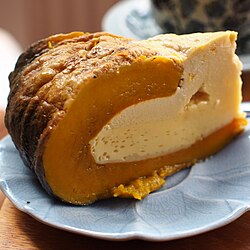
This is a list of notable squash and pumpkin dishes that are prepared using squash and pumpkin as a primary ingredient. Pumpkin is a squash cultivar.

This is a list of notable squash and pumpkin dishes that are prepared using squash and pumpkin as a primary ingredient. Pumpkin is a squash cultivar.





